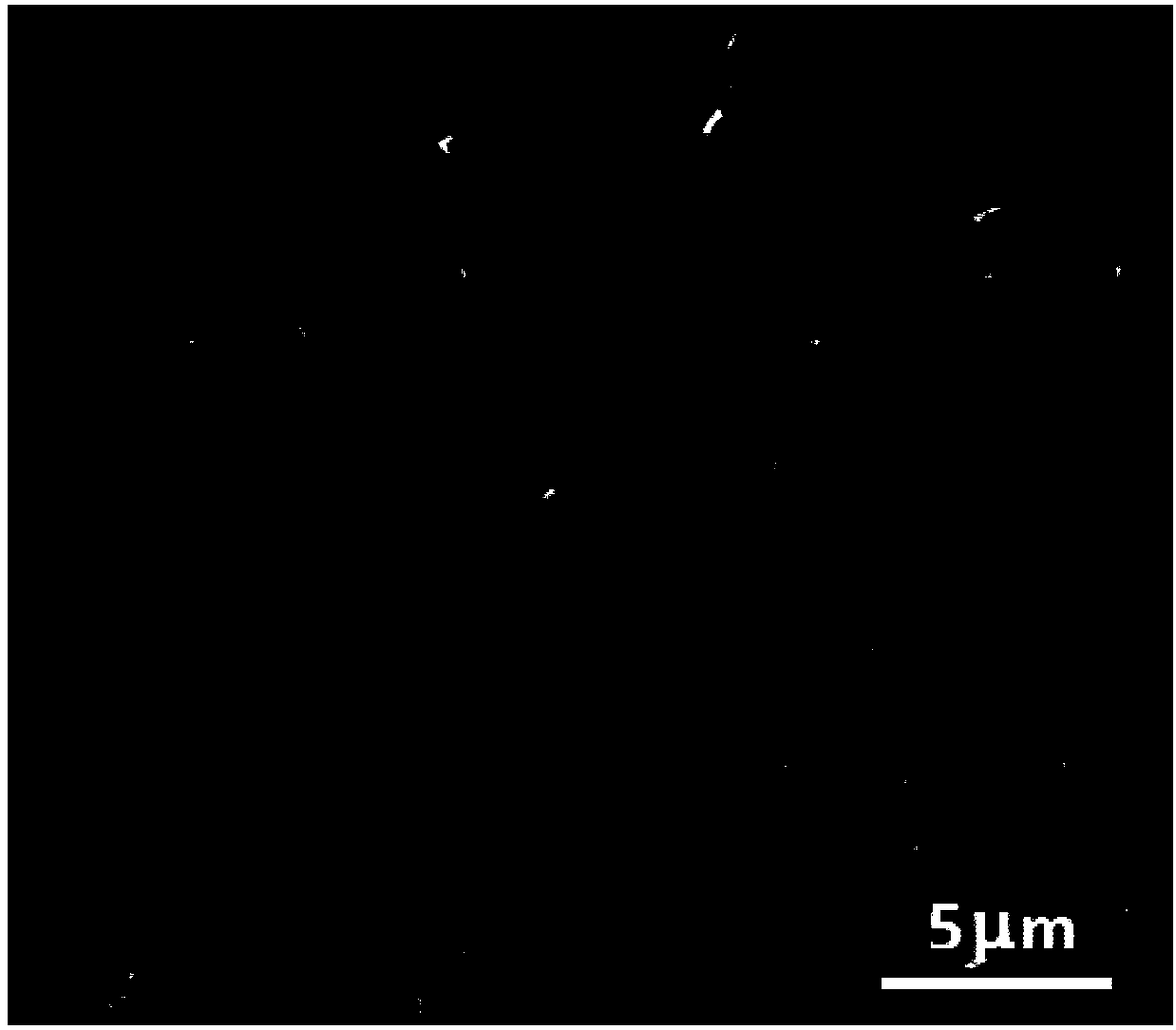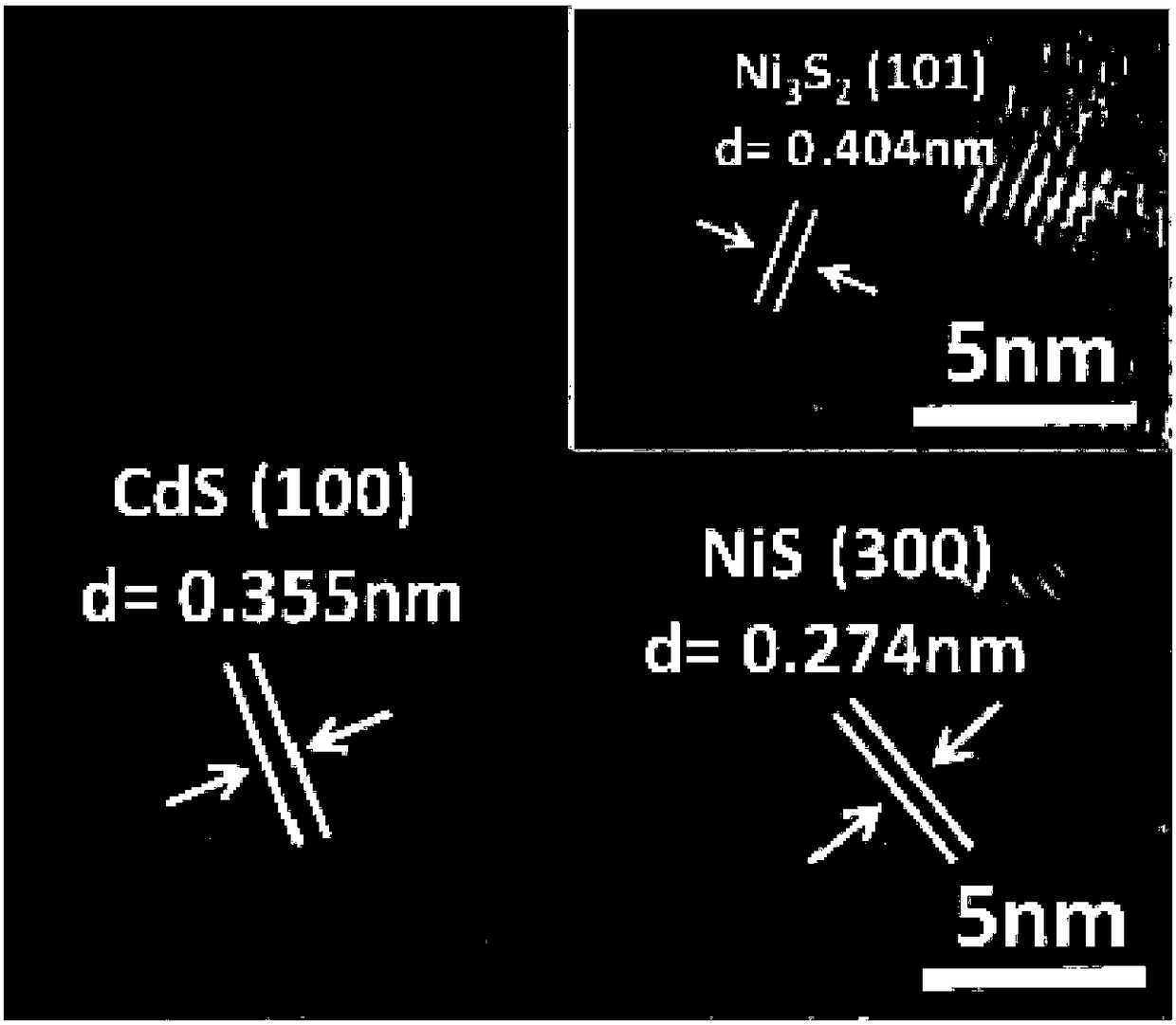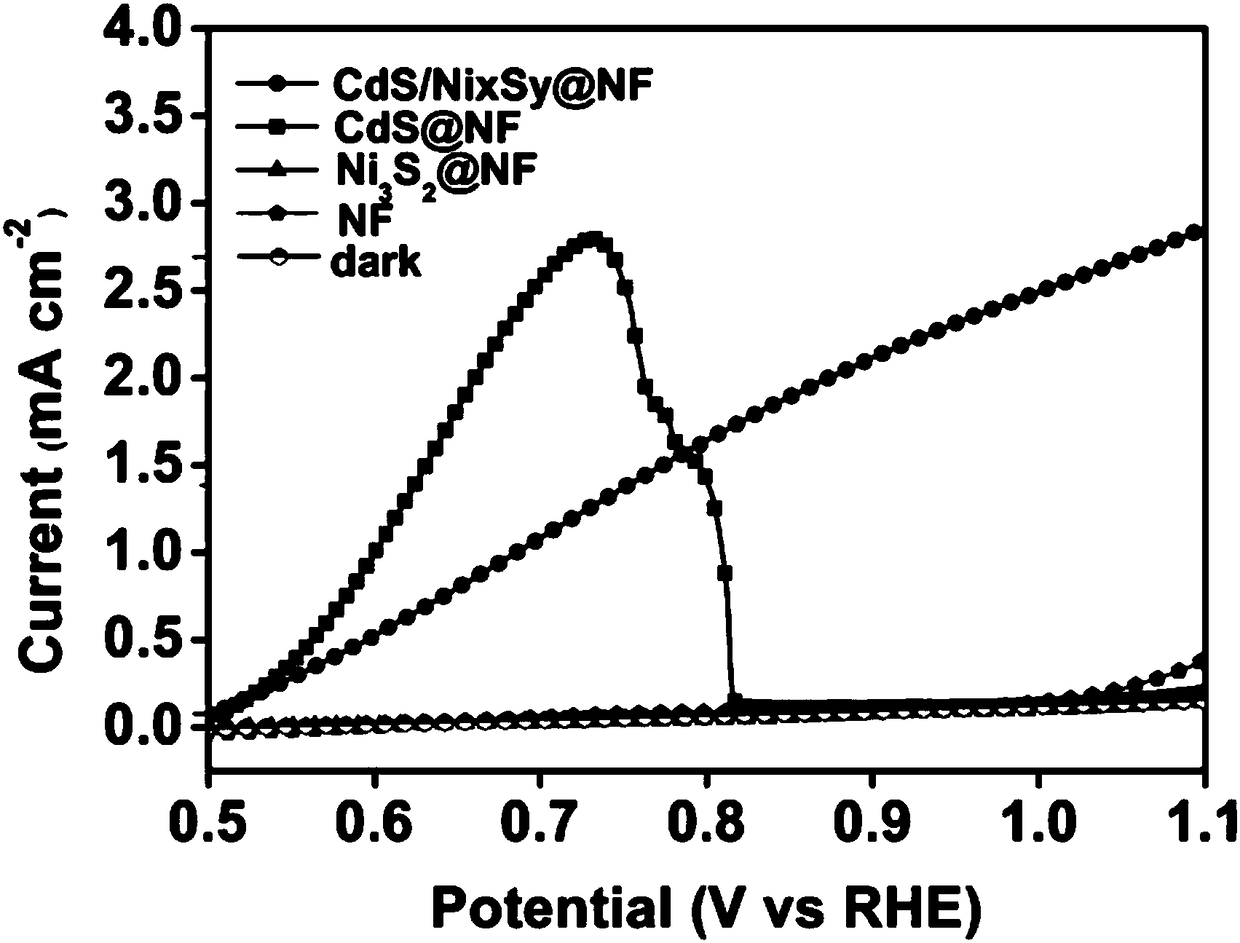A kind of preparation method of self-supporting photoanode
A self-supporting, photoanode technology, applied in hybrid capacitor electrodes, hybrid/electric double layer capacitor manufacturing, etc., can solve problems such as photocorrosion, fast recombination rate of electrons and holes, and limited photoelectric conversion efficiency of cadmium sulfide photoanodes. Achieve the effect of improving stability and reducing photocorrosion
- Summary
- Abstract
- Description
- Claims
- Application Information
AI Technical Summary
Problems solved by technology
Method used
Image
Examples
Embodiment 1
[0017] Example 1: This example prepares a three-dimensional nickel sulfide / nickel disulfide / cadmium sulfide nanocomposite material, which specifically includes the following steps:
[0018] (1) 0.153g of cadmium acetate powder, 0.168g of thiourea powder, and 0.036g of CTAB were uniformly dispersed in 20ml of aqueous solution by ultrasound.
[0019] (2) Add 167 μl of hydrochloric acid (12M) dropwise to the solution obtained in step (1), and sonicate for ten minutes to form a mixed solution.
[0020] (3) Foam nickel (1*3cm 2 ) and the above-mentioned mixed solution were put into the reaction kettle, and reacted at 180 degrees Celsius for 5 hours, and the nickel foam turned black, and the composite material was obtained.
[0021] figure 1 For the scanning electron micrograph (SEM) of the cadmium sulfide / nickel sulfide / nickel disulfide nanocomposite prepared by the present invention, as can be seen from the figure, this cadmium sulfide / nickel sulfide / nickel disulfide is based on...
Embodiment 2
[0022] Example 2: The nickel foam-based photoanode obtained in Example 1 was directly used for photoelectrochemical oxygen production, the test solution was 1M potassium hydroxide, and the light was visible light (>420nm). The prepared electrode was used as the working electrode, the Ag / AgCl electrode was used as the reference electrode, and the Pt sheet was used as the counter electrode to form a three-electrode system. Before doing the electrochemical test, feed saturated nitrogen to reach saturation, remove the polarization curve (Polarizationcurves) of the three-dimensional cadmium sulfide / nickel sulfide / nickel disulfide nanocomposite prepared by the present invention, as can be seen from the figure when the voltage is At 1V, the current density reaches ~3mA / cm 2 . Figure 4 The stability test curve (Durability test) of the three-dimensional cadmium sulfide / nickel sulfide / nickel disulfide prepared for the present invention, as can be seen from the figure, after 2000s of c...
PUM
 Login to View More
Login to View More Abstract
Description
Claims
Application Information
 Login to View More
Login to View More - R&D
- Intellectual Property
- Life Sciences
- Materials
- Tech Scout
- Unparalleled Data Quality
- Higher Quality Content
- 60% Fewer Hallucinations
Browse by: Latest US Patents, China's latest patents, Technical Efficacy Thesaurus, Application Domain, Technology Topic, Popular Technical Reports.
© 2025 PatSnap. All rights reserved.Legal|Privacy policy|Modern Slavery Act Transparency Statement|Sitemap|About US| Contact US: help@patsnap.com



